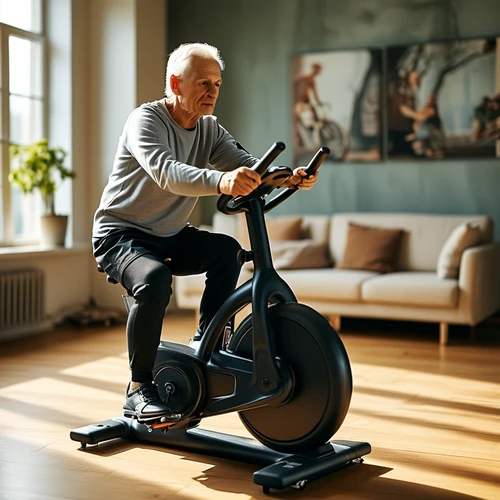In the early 2000s, researchers first demonstrated that exercise can alleviate tremors common in Parkinson's disease. Although the exact mechanisms remain unclear, recent findings are bringing us closer to understanding how physical activity aids affected individuals.
A groundbreaking study from University Hospitals and VA Northeast Ohio Healthcare System, conducted through the Cleveland Functional Electrical Stimulation (FES) Center, offers new insights. It suggests that long-term dynamic exercise programs may have broader restorative effects on brain signals in people with Parkinson's disease than previously thought.
Scientists employed deep brain stimulation device recordings to assess how prolonged exercise could reactivate connections impacted by Parkinson's.
Unlike earlier research, this study aimed to decode the neurological changes associated with motor symptom relief in patients using both second-generation DBS devices and a long-term dynamic cycling program.
Details of this work were published in Clinical Neurophysiology.
Clinical NeurophysiologyLed by neurology specialist Aasef Shaikh, MD, PhD, Vice Chair for Research at University Hospitals and Professor of Neurology, along with the research team at Cleveland FES Center. Prajakta Joshi, a lead author on the paper, is a PhD candidate in biomedical engineering at Shaikh Lab.
"We've long established that cycling regimens are beneficial for addressing Parkinson's tremors," Dr. Shaikh said. "This latest study combines deep brain stimulation with ongoing exercise to visualize how sustained physical activity could rewire neural connections."
Dr. Shaikh highlighted the significant collaboration between two medical systems, which enabled a larger participant pool.
Subjects were enrolled in 12 dynamic cycling sessions over four weeks, all of whom had been previously implanted with deep brain stimulation devices for motor symptom relief and signal measurement.
A key aspect of this investigation was using adaptive cycling, technology that adapts bike resistance based on the rider's performance. This feature helps riders maintain an 80-rpm pace while engaging in a visual task involving balancing a virtual balloon.
The study observed measurable changes in motor control regions after 12 sessions, despite no immediate brain signal alterations. Joshi notes modern DBS limits the view of exercise-induced effects to electrode-implanted areas, possibly indicating broader circuit involvement.
While the existing findings highlight exercise's potential for inducing network-level brain changes improving Parkinson’s symptoms, further research could yield personalized treatment advances.


